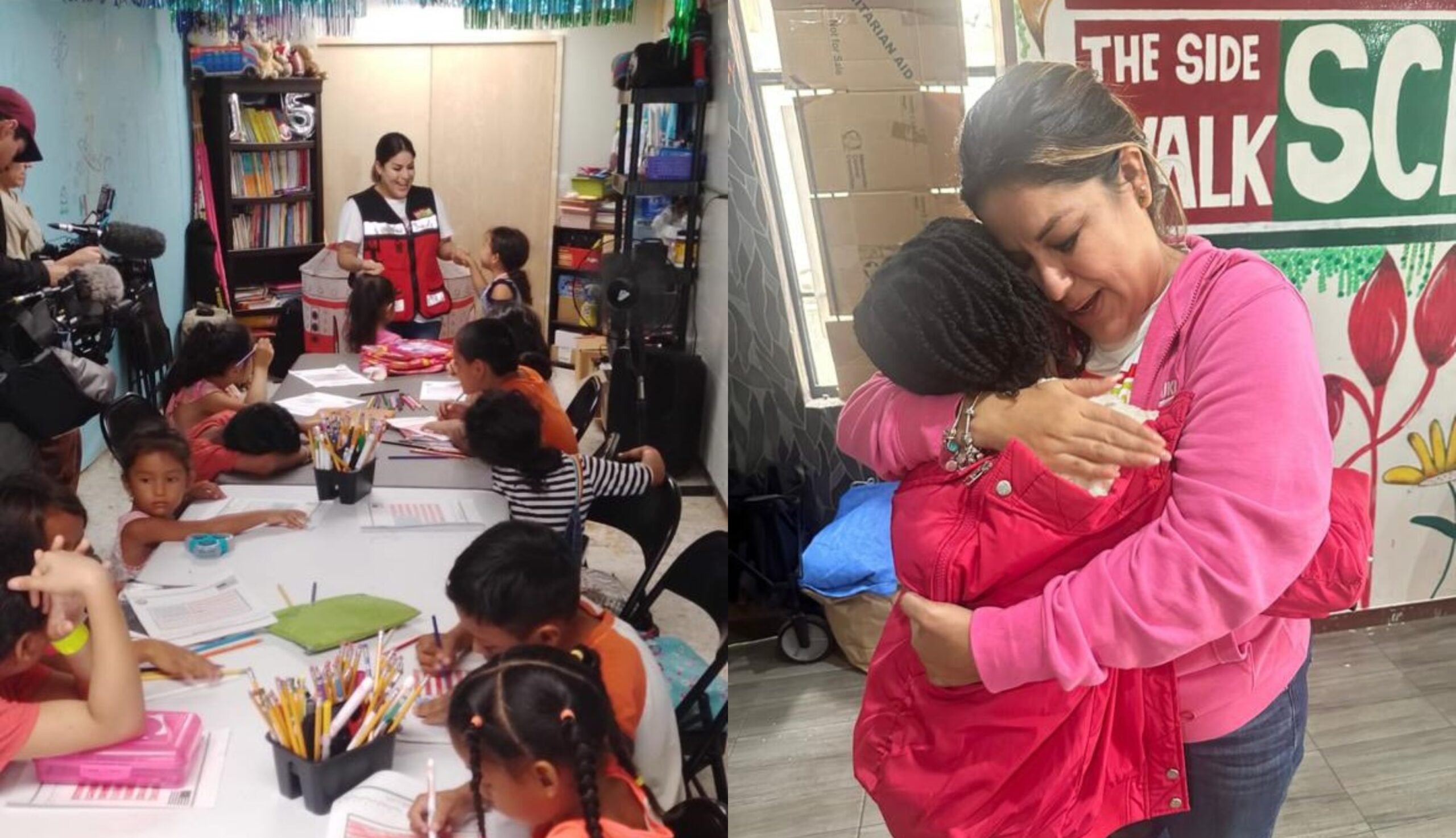Under various and ever-shifting policies curtailing access to asylum, dating back to the Trump administration and continuing through that of Biden, United States-bound refugees from all over the world have languished for weeks or months in Mexican border towns abutting the Rio Grande. Some escaped political persecution, while others fled economic deprivation, natural disasters, authoritarian regimes, or war. Many are mothers or fathers; not a few are children, some of whom have spent almost the entirety of their youth on the move, in search of safety and stability.
America’s presidents—both Republican and Democrat—have responded with xenophobic bluster or disregard, opting for deterrence instead of dignity. The U.S public generally has shown a fraction of the concern it once showed for families separated by Trump on American soil for these migrants still stuck on the other side, fending off cartel kidnappings and shakedowns at every turn. But, in the binational communities that straddle the Texas-Mexico divide, some people including activists, faith leaders, hometown heroes, and good Samaritans have responded differently. These people have responded to a humanitarian crisis by forming organizations and stepping up for migrant families. People like Liliana Carlos.
It was June when I met Carlos, who lives across the border from McAllen in Reynosa, the 700,000-person city where she serves as pastor at a Pentecostal church. She also works for the Sidewalk School, a humanitarian nonprofit that offers classesseveral days a week to migrant children in Reynosa and nearby Matamoros, sister city to Brownsville. The kids aren’t enrolled in local public schools, so the nonprofit—founded in 2019—teaches them reading, math, and art in addition to bringing food and coordinating medical services. I first encountered Carlos in the group’s Matamoros classroom, inside a hospital-turned-migrant shelter, on a near-100-degree-Fahrenheit day.
“Which one is blue? Is it this one?” Carlos asked the children in Spanish, pointing at colored pencils.
She gave more directions: Color in the “A mayúscula anaranjada”—the orange, capitalized letter “A.” For correct answers, the children occasionally got cookies. The fastest student to complete the worksheet correctly got a stuffed animal. “Gracias mi cielo,” Carlos said to one pupil.
The Sidewalk School’s students range in age from 6 to 17 and come from countries including Haiti, Venezuela, Colombia, and Honduras. Some have been on the move for months, resulting in gaps in their education. Some confide in their teachers about feeling lonely and hopeless.
Carlos can do more than sympathize: She understands those feelings, because she was once an immigrant herself. “When I see a mom with her child trying to cross,” she told me, “It’s like I see myself in her.”

When Carlos was 5, she herself crossed the Rio Grande in Reynosa. Wearing her Sunday best, she remembers, she stepped into a small white boat with her mother and four siblings. Her mother, Maria, said they were going for a ride. When they disembarked at Anzalduas Park in Mission, Texas, it marked the beginning of a long chapter of difficult transition for Carlos.
Like many of the children she now works with, Carlos’ family had fled violence. Her father was physically abusive, Carlos told me, so Maria fled with the kids from their hometown of Monterrey and headed north. Maria intended to take her children far away, somewhere she hoped her ex-husband would never find her—across the river.
For their first few months in the United States, Carlos’ family slept in a camper in Mission parked outside the home of a family they knew. To provide for her children, Maria picked oranges, onions, and cucumbers, and cleaned apartments and hotels. It hit home for Carlos that she was truly in a new country when she went to school and didn’t know English.
As she grew up, she knew in the back of her head that she wasn’t a citizen—but being undocumented was incomprehensible in a way. It was a distant concept that didn’t always touch her daily reality in the Rio Grande Valley. She had learned a new language. She was a dedicated student. Most days, her legal status wasn’t staring her in the face.
Then, a trip to Reynosa for tacos in 2006, when she was in her mid-20s, changed all that. Upon trying to return to Texas, a U.S. Customs and Border Protection agent on the international bridge looked her dead in the eye. “No,” she recalls him saying. “This is not your country.”
She remembers crying. “Why are you taking my life away?” she pleaded. “I’ve lived here my whole life.”
Her then-3-year-old daughter was still with family on the U.S. side. So Carlos, having been denied passage at the port of entry, crossed the Río Bravo once more. This time, there was no white boat, no Sunday best, and no family members. She was alone in a car tire, which she used as a swimming floatie. Her smuggler was an older man. After she disembarked on the U.S. side, the smuggler took out a knife, and fear struck Carlos. The smuggler stabbed the inflatable, then told her to run away.
She’d spend some 20 years in Mission before domestic violence, the same cruelty that drove her mother to bring her children to the United States, ultimately drove her back the other way. Sitting in an office chair at a migrant shelter in Reynosa, and again later over the phone, Carlos told me about her ex-husband who forced her to do drugs, hit her, and threatened her. “If I kill you,” she recalls him saying, “nobody’s gonna care, because you’re a wetback.”
After one bout of violence that nearly took Carlos’ life, her ex went to jail, and she took the chance to flee back to Reynosa. There, her religious beliefs deepened, and she became a pastor. At church, she met the love of her life, who is now her husband. Carlos and her daughter, Kayleen, both serve migrants in Tamaulipas’ border communities—Kayleen as a soccer coach.
When she was a kid, Carlos dreamed of various careers: Air Force pilot, gym coach, teacher, nurse. In a way, Air Force pilot aside, she gets to fill all those roles for the kids in Reynosa and Matamoros. “Sidewalk School gave me the opportunity to accomplish everything that I wanted as a child,” she told me with a lighthearted chuckle.
Back in her classroom in Matamoros, the students sat in rows at tables, coloring, eating cookies, and talking about pets or what they’d like to do on their birthdays. A girl sitting next to me proudly informed me her birthday would be in October.
Carlos walked around, handing out cookies and chatting with the kids. “Hurry up!” she urged them in Spanish, flashing a smile. Once they finished their coloring activity, they’d all get to dance together. She put on “Uptown Funk” by Bruno Mars.
“¡Quiero bailar! ¿No quieren bailar conmigo?”
The post She Fled Mexico as a Child. Now, She Teaches Migrant Kids in Tamaulipas. appeared first on The Texas Observer.
